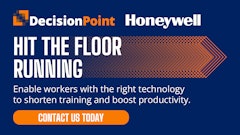In today's challenging business environment manufacturers, distributors and retailers realize that what worked in the past might not work today. Looking into the future they try to come up with new ideas that will help them lower their operating cost, gain market share and increase profitability. As they do this, they will often find themselves assuming new roles.
Today's New Business Reality
Trying to stay competitive, manufacturers are often forced to outsource their business to overseas companies and assemble the finished components in the United States. No longer being only manufacturers, many try to assume the role of a distributor, selling directly to the retail stores. The distributors, who are also changing their business models, often bypass the manufacturer by importing the components from overseas and assembling it at their warehouses, thus becoming partial manufacturers.
Then the major retailers, in trying to offer lower selling prices to the end consumer, often bypass the distributor and manufacturer by buying directly from the overseas manufacturers, bringing goods to their distribution centers where they are re-packaged and shipped to the retail stores.
Manufacturers and distributors, being creative as well, have found the Web and shopping malls to be excellent vehicles through which to sell their products directly to consumers, competing with the retail stores. The Web and shopping mall outlets serve as an excellent channel to sell the excess inventory at discounted prices to end consumers.
Obstacles Found in this "Brave New World"
The lack of an automated warehouse results in misplaced inventory and incorrect shipments. Returned inventory is replenished; when stock is returned, it often becomes excess inventory. Buying on "gut feeling" can result in shortages or excess inventory. When the physical warehouse inventory is taken, misplaced inventory that is found at that time becomes excess inventory that might not be sold. When substantial inventory is found in the warehouse, many banks are reluctant to renew or increase lines of credit, resulting in businesses having to go to the secondary financial market that carries substantially higher interest lending rates.
Finding the Proper Software
When searching for new software, it's important to address current and future business requirements. A "good looking demo" can be very misleading if the business requirements are not fully addressed. While viewing the demo, close attention should be paid to how sophisticated the users are and how big the software learning curve will be. Very often, companies that buy software without paying attention to their users' ability and the software learning curve end up shelving it and going back to the "old reliable" system, thus becoming another sad story. Before choosing the software, the following questions should be asked when speaking with the software vendor's references:
- Is the software "user friendly," and how big is the learning curve? A high learning curve will result in additional costs and business disruption.
- How responsive is the "hotline" support? An unresponsive hotline will result in severe business disruptions and financial losses.
- Was your vendor willing to modify the software to meet your business requirements? Changing the business model to meet the software requirements will result in a higher learning curve and additional costs.
The Benefits of an Integrated Computer System
An integrated computer system will enable businesses to cross the fine line between being a manufacturer, distributor or retailer. A fish and seafood distributor who imports products from all over the world often acts as a manufacturer, cutting large fish into steaks. After going live with a new computer system, the distributor decided to open a 25,000-square-foot retail store behind his warehouse to sell his products directly to the public. Using integrated software that consists of manufacturing, distribution, retail and e-commerce modules enabled him to retail fresh fish, seafood and a wide variety of food ranging from pasta to imported cheese and olive oil.
Looking to the Future
In today's challenging business environment, continuing to do "what has always worked in the past" can have catastrophic results. Just because it worked in the past does not guarantee it will work tomorrow. When looking into the future, all business requirements should be evaluated. Very often, companies find themselves assuming different roles then they expected in order to lower operating costs, gain market share and increase profitability.














![Pros To Know 2026 [color]](https://img.sdcexec.com/mindful/acbm/workspaces/default/uploads/2025/08/prostoknow-2026-color.mduFvhpgMk.png?ar=16%3A9&auto=format%2Ccompress&bg=fff&fill-color=fff&fit=fill&h=135&q=70&w=240)

